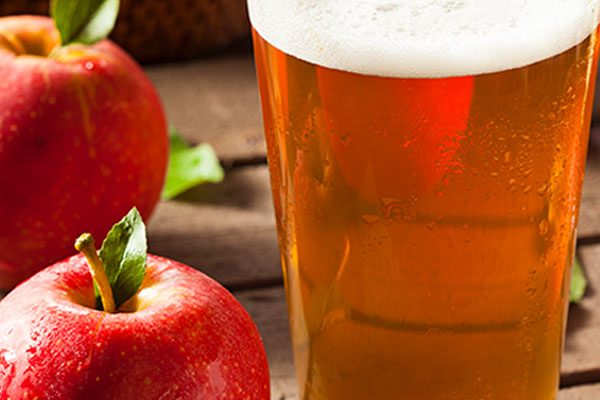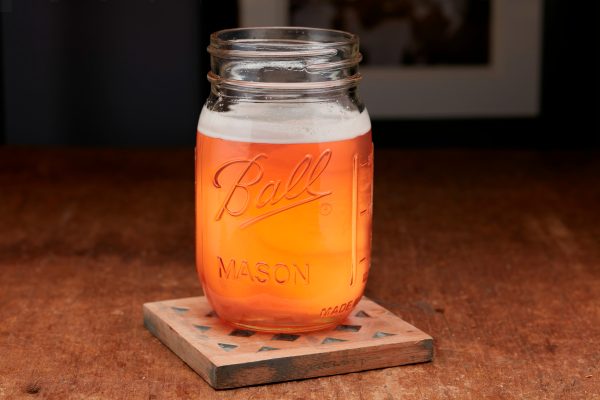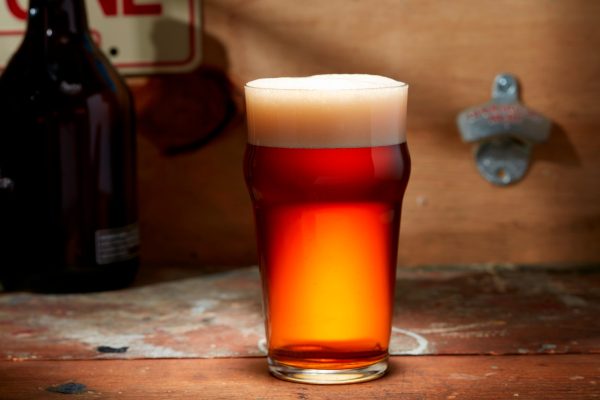
The following beer recipe is featured in the March/April 2016 issue of Zymurgy magazine. Access this issue along with the archives with Zymurgy Online!
The following recipe is from the article "Quick & Easy Malted Cider" by Amahl Turczyn, featured in the March/April 2016 issue of Zymurgy magazine. Join the American Homebrewers Association to get a subscription to Zymurgy magazine and gain access to the digital archives.
Cider generally doesn't contain much in the way of yeast nutrients, so most hard cider recipes call for an addition. However, malted barley wort does contain yeast nutrients, and low-gravity wort "tailings" collected after you've finished sparging a high-gravity all-grain beer are easy to com by—just sparge a bit longer once your beer volume has been reached. The extra low-gravity wort provides excellent yeast nutrient for cider fermentation and lends a pleasing body, flavor, and complexity.
The following beer recipe is featured in the March/April 2016 issue of Zymurgy magazine. Access this issue along with the archives with Zymurgy Online!
The following recipe is from the article "Quick & Easy Malted Cider" by Amahl Turczyn, featured in the March/April 2016 issue of Zymurgy magazine. Join the American Homebrewers Association to get a subscription to Zymurgy magazine and gain access to the digital archives.
Cider generally doesn't contain much in the way of yeast nutrients, so most hard cider recipes call for an addition. However, malted barley wort does contain yeast nutrients, and low-gravity wort "tailings" collected after you've finished sparging a high-gravity all-grain beer are easy to com by—just sparge a bit longer once your beer volume has been reached. The extra low-gravity wort provides excellent yeast nutrient for cider fermentation and lends a pleasing body, flavor, and complexity.
Ingredients:
- 4 gal. (15.1 L) 1.050 gravity apple juice
- 1 gal. (3.8 L) malted barley wort (preferably 1.040–1.050 gravity)
- sweetener (optional, see directions)
- 2 tsp. (10 mL) cream of tartar
- 2 12-ounce (355 mL) cans frozen apple (or other fruit) juice concentrate to back-sweeten.
- English ale yeast
Specifications:
Yield: 5.25 gallons (20 L)
Original Gravity: 1.050 (12° P)
Final Gravity: 1.004–1.006 (1–1.5° P) before backsweetening
ABV: about 6%
Directions:
Boil 1 gallon (3.79 L) wort tailings (see intro for explanation) for at least 15 minutes. If wort is less than 1.050 OG, collect a greater volume and boil until target gravity is reached (or add unhopped malt extract or other sweeteners. Just don’t add hops!). Pour apple juice into a sanitized 6.5-gallon (24.6 L) fermenter, splashing to aerate. Rack wort onto juice, make sure temperature equalizes at about 68° F (20° C), and pitch yeast. Ferment out completely, and then wait until yeast begins to fall out and the cider starts to clarify. Rack off lees into a sanitized keg, backsweeten to taste, force carbonate to desired CO2 level, and chill to serving temperatures of no higher than 40° F (4° C). Note: the final volume at kegging is 5 gallons (18.9 L). It is not recommended to bottle this recipe if doing the backsweetening process. Cream of Tartar For added balance, a modest addition of acidity really helps bring a nice zip to cider made from table apples rather than true cider apples. Most table varieties have high sugar content and only a bit of acidity, with almost no astringency. Fortunately, adding acidity is as easy as blending in one or two teaspoons of cream of tartar, a common baking ingredient. It’s tartaric acid, made from purified grape skin residues, and thus has an astringent character as well. I usually go with two teaspoons (10 mL) boiled in about 1 fluid oz. (30 mL) of water in the microwave to sanitize, and then dissolved into the cider before backsweetening. Backsweetening & Other Sweeteners Personally, I like to maximize the apple component of cider. Apple juice concentrate is my favorite way to backsweeten. Yes, it is highly fermentable, so the fermented, blended cider must be refrigerated, preferably after kegging and force carbonation, but the extra apple flavor and aroma is very appealing if you get the balance right. For a 5-gallon (18.9 L) volume at a finishing gravity of 1.004 to 1.006 (1 to 1.5° P), I blend in just enough frozen apple juice concentrate to bring the gravity up about one point Plato to 1.012 (2.5° P) and then taste. This ends up being about two 12-ounce (355 mL) cans of concentrate, but I always have extra on hand. Remember if you choose to carbonate your cider, that will affect the perception of dryness too. Learn more about backsweetening cider.
Extract Option
Dissolve 1.4 lb. (625 g) unhopped extra-pale malt extract syrup or 1.15 lb. (522 g) extra-light dry malt extract and other sweeteners (if desired) into one gallon (3.8 L) of water. Boil 15 minutes to sanitize. Pour apple juice into sanitized, 6.5-gallon (24.6 L) fermenter, splashing to aerate. Rack wort onto juice, make sure temperature equalizes at about 68° F (20° C) and pitch yeast. Ferment out completely, and then wait until yeast begins to fall out and the cider starts to clarify. Rack off lees into a sanitized keg, back-sweeten to taste, force carbonate to desired CO2 level, and chill to serving temperatures of no higher than 40° F (4° C).





Share Post